Wildfowl nests: natural and artificial
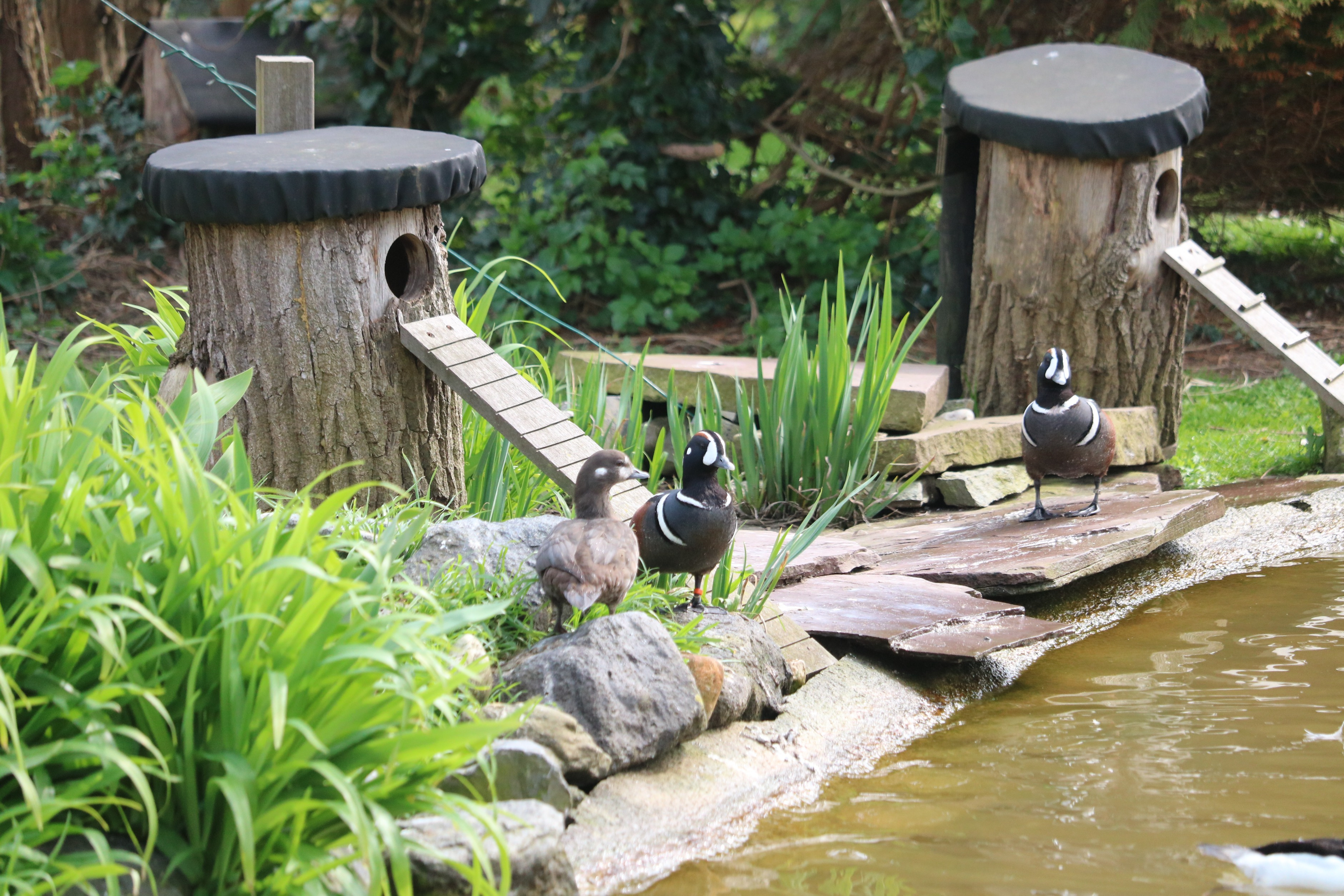
Above: Harlequin ducks and nestboxes made of tree trunks
Artificial nests to mimic nature
Ducks, geese and swans of all kinds have many different habits to form pairs, make or choose nests, lay eggs, incubate them and raise their offspring. This pages only talks about artificial nests, to inspire you: to design, build and provide nests that mimics nature as best as possible, to stimulate ducks, geese and swans to lay their eggs in aviculture.
Many captive ducks need nestboxes to lay their eggs in; many species are cavitiy or burrow nesters by nature. Most geese and all swans on the other hand need an overview of their territory and prefer to nest in open spaces.
More examples of nestboxes for waterfowl can be found in this Facebook album.
Wood ducks, Mandarins, mergansers and teal
These boxes can be used for North American wood ducks, Mandarins, mergansers and ringed teal. The box should be 25cm (10") wide by 60cm (24") high. A 11cm (4") diameter oval (an inch larger for the whistling ducks, 1,5cm (1/2 inch) smaller for hooded merganser & smew) should be cut about 15cm (6") from the top in the center of the box.
You should make either the back or front side longer than one, this way rain can run off the roof should overlap the entrance hole. I have hinges on the back of the roof so I can inspect the nest. Place a piece of screen or hardware cloth on the inside of the box, just below the entrance hole. The ducklings will need this to get traction to get out of the box. I use pine shavings as nesting material. You can mount this however high as you choose, but do provide a ladder if the hen has been wing clipped.
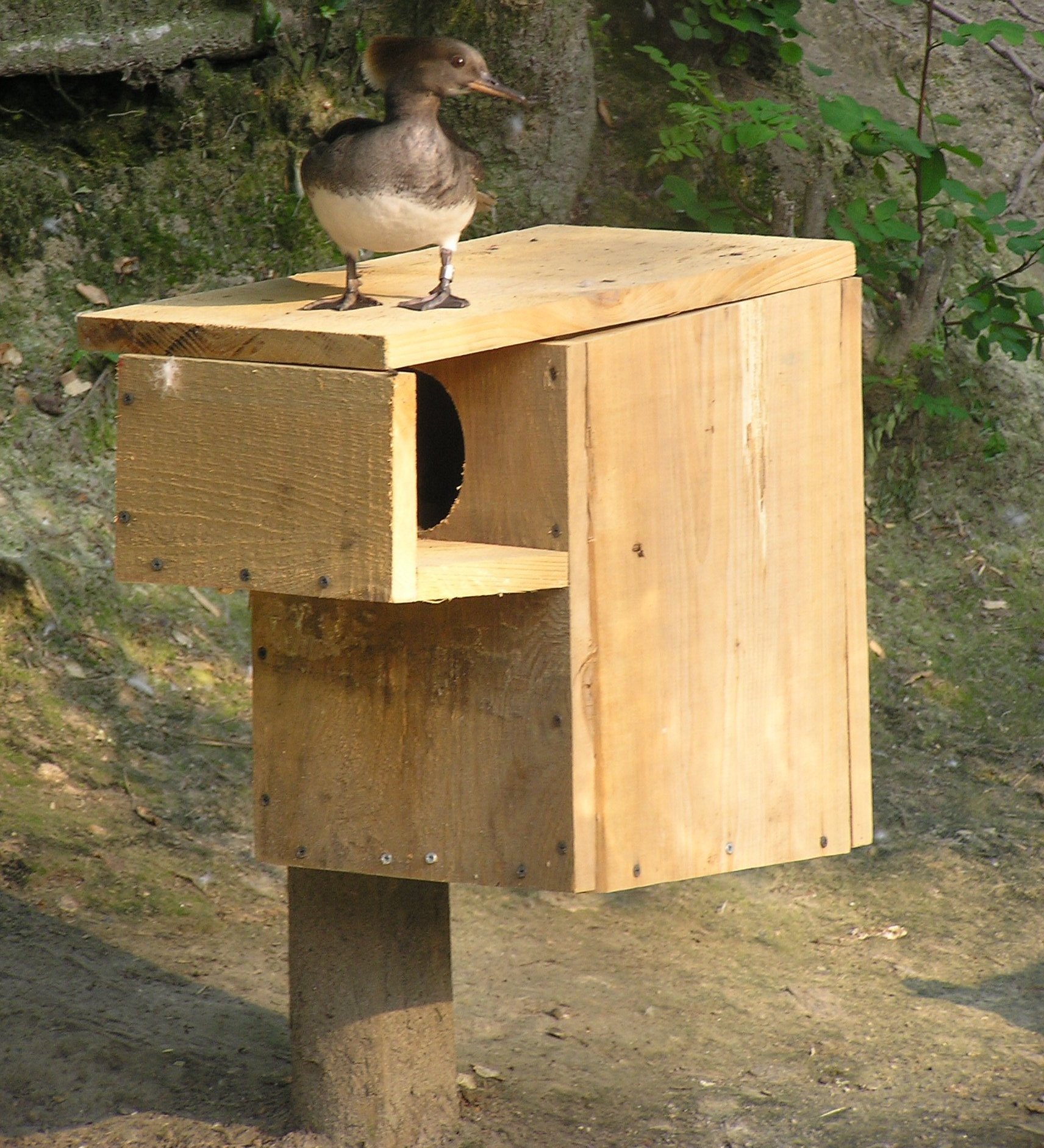
Above: Hooded merganser on a nestbox rooftop
Teal nestboxes
While many species of teal prefer to nest on the ground in thick cover, some often use boxes. The Ringed Teal need these boxes to nest. The boxes measure 36cm (14") high, 23cm (9") wide and a length of 25cm (10").
A 8cm (3") dide hole needs to placed in the center on the front of the box. For Ringed Teal, place the box about 60cm to 90cm (2 to 3 feet) high on a post. Like the above nestbox, place a ladder to the box if the bird's wings are clipped. Although the entrance hole is smaller, I have seen Mandarins use these boxes.
The same box can be used for ground nesting teal such as Green-winged Teal and other species. Place the box on the ground and cover with plants. I cut cedar and willow branches and place them on and around the box to provide the ducks with an extra sense of secruity. You can add hinges to the roof if you so desire. I also use pine shavings as nesting material.

Above: Nestbox suitable for teal, whistling ducks and similar cavity nesters.

Ruddy shelducks and their artificial nestbox, at Aeres Barneveld (NL).
Shelducks and other burrow nesters
Shelducks
Since most species of shelducks (Tadorna sp.) nest in burrows in the wild, they need a box that is half buried in the ground. A simple box 35cm x 35cm (14" square) with a piece of pvc pipe 15cm (or 6") in diameter and 30cm (or 12") long coming out of the front works great. You can bury it however you may choose. I have seen some that are just place on the ground and then surrounded by soil and others that are buried with just the pipe and hinged lid visible.
Dabbling ducks
Mallard type species (Anas platyrhynchos and other closely linked members of the Anas genus) will sometimes use square boxes that are 30 cm (12") wide, 30cm (12") high and 35cm (14") long. They can either be open on one end or have a 13cm (5") diameter entrance hole.
Diving ducks
Pochards such as Rosybills will sometimes use boxes that are 30 cm (12") square placed under thick cover.
It is always wise to place at least two or three nest boxes per pair in the aviary. This gives the pair the opportunity to choose which box is "right" for them. Remove the boxes in the fall and make any repairs needed and give them a good cleaning. You can paint the boxes whatever color you like, we use dark brown which blends in good with the surroundings.
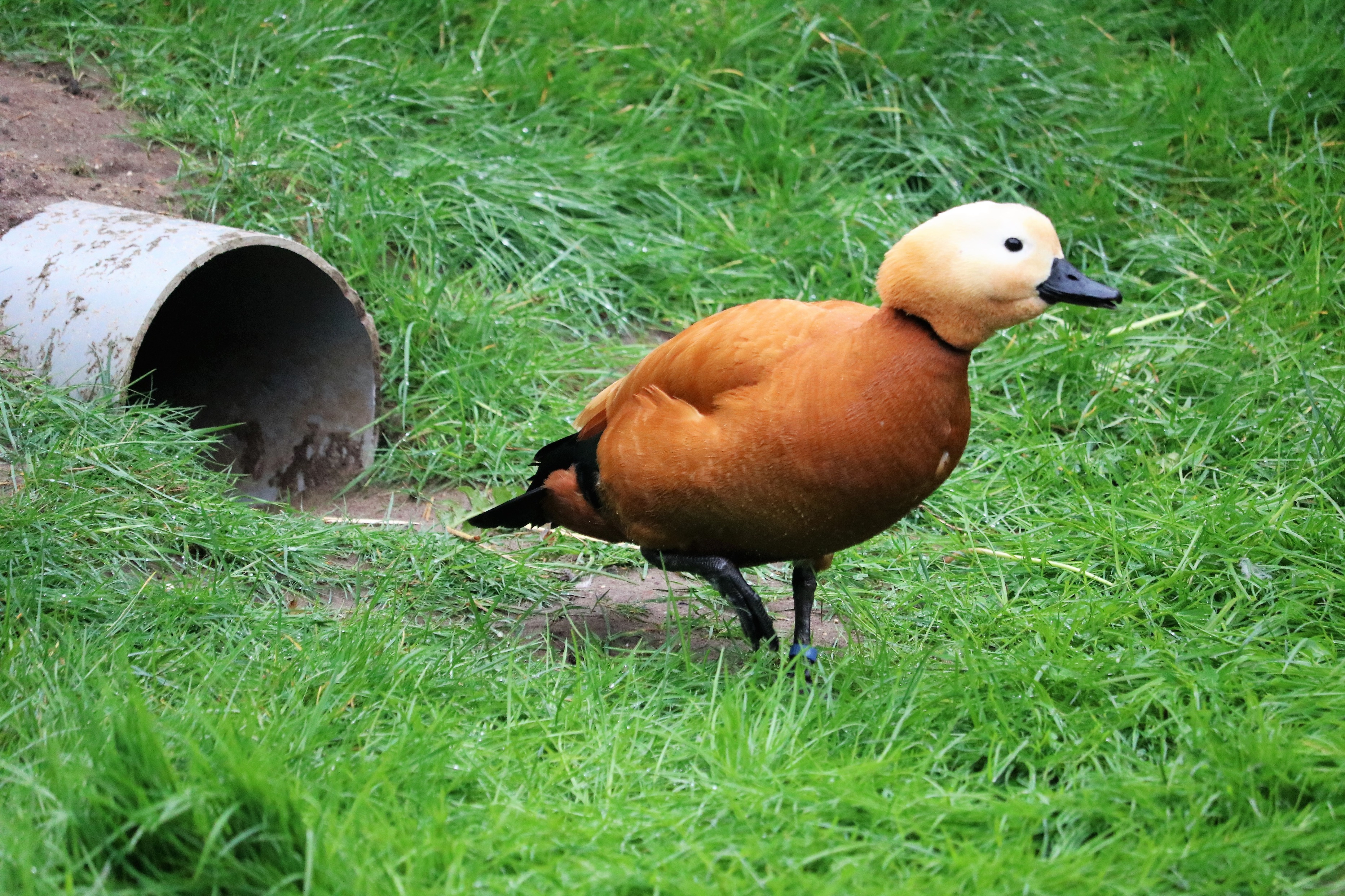
Above: A male ruddy shelduck in front of its nest burrow.

Above: A male ruddy shelduck entering its nest burrow.
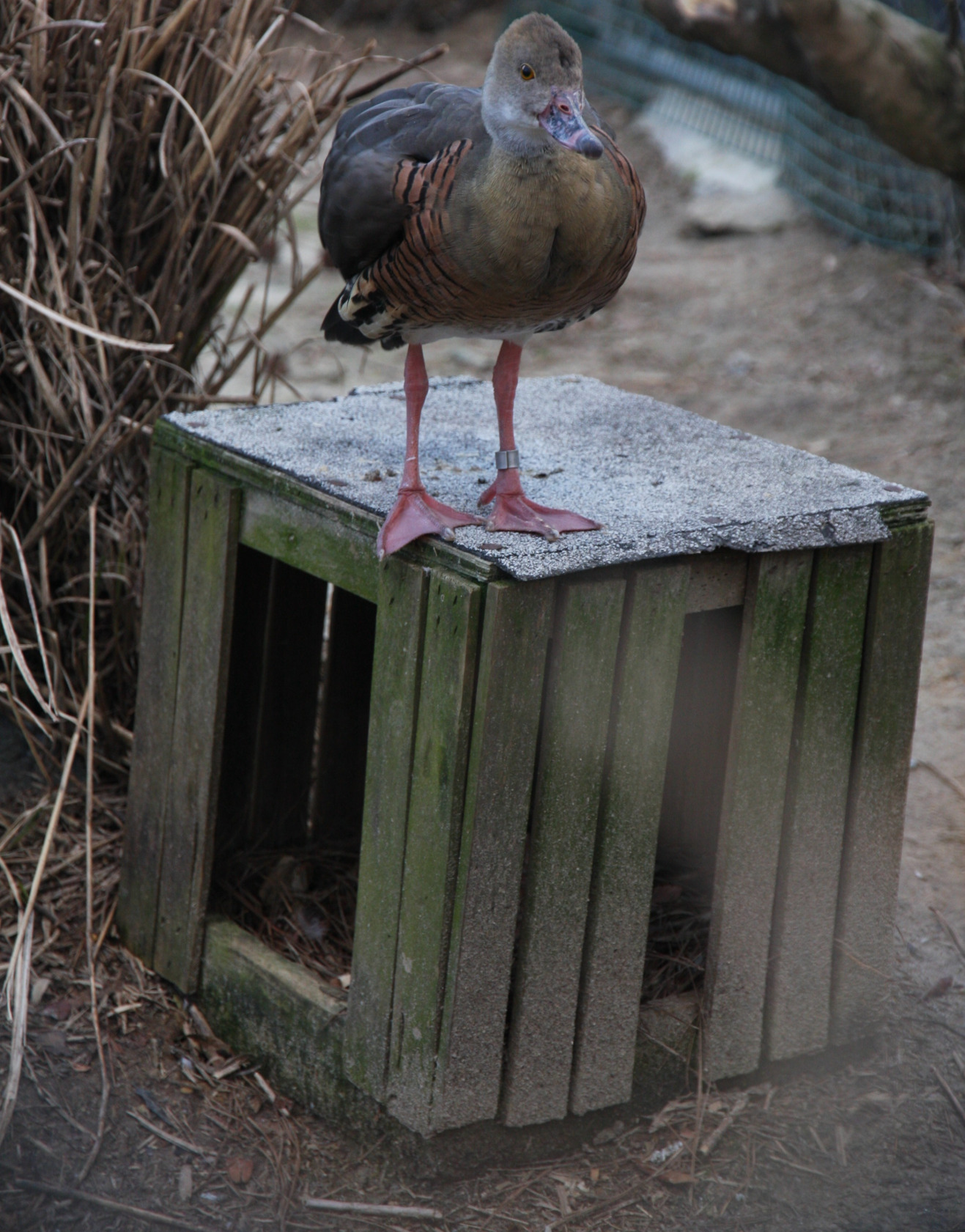
Plumed whistling duck (also known as Eyton's whistling duck) on top of an artificial nest for ground nesters.
Ground nesters
This type of box is preferred by a diversity of ducks, such as Bahama pintail (Anas bahamensis), pochards (Aythya sp.) and whistling ducks (Dendrocygna sp.) that prefer to nest in the density of plants, but may also be used by other small ground nesting ducks like stiff-tailed ducks (Oxyura sp.) and some teal.
It's very simple to build, you can either add a front with a 8cm (3") entance hole, or leave it open. The boxes can be 35cm (14") long, 30cm (12") high and (30cm) 12" wide. Might be placed under cover or near bushes. Put in some straw inside for the female to construct a nest.
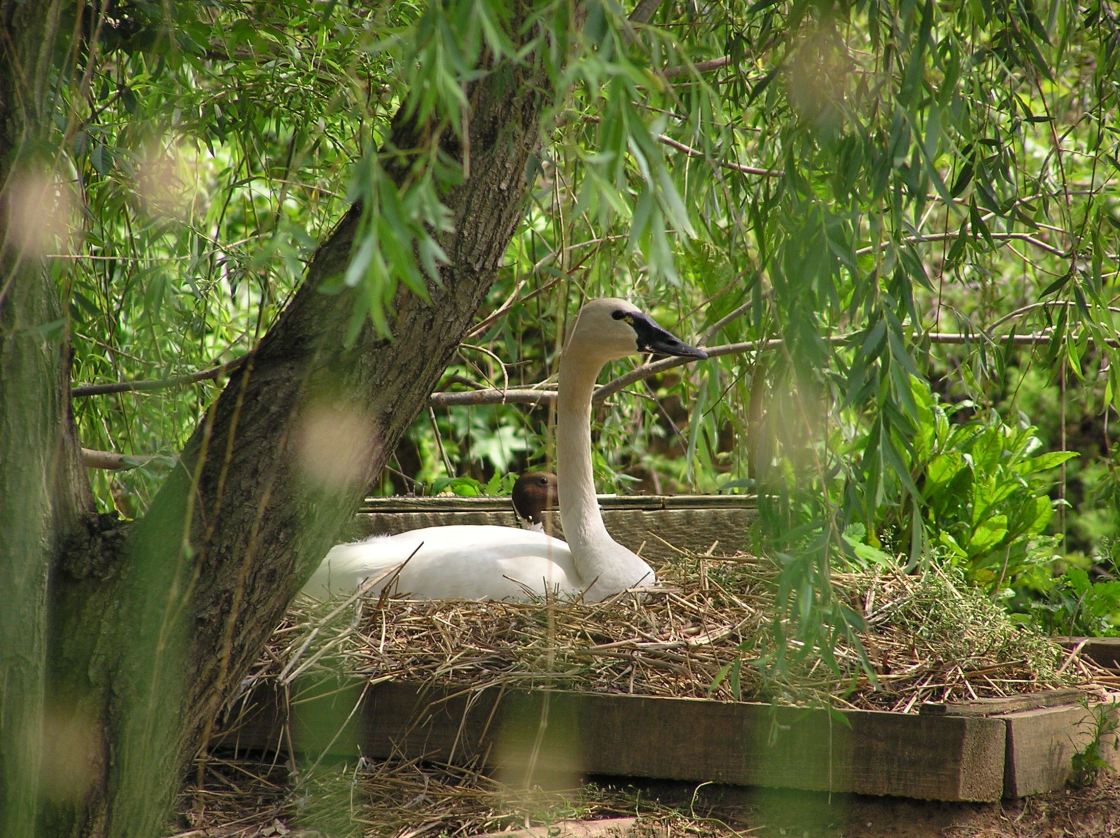
Above: Tundra swan (or whistling swan), Cygnus columbianus columbianus at Sylvan Heights Bird Park (2005).
Swans
Swans (Cygnus sp.) and Coscorobas (Coscoroba coscoroba) typicalle nest in swamps and marches, and prefer to make their nest in a reedbed. When a reedbed is not available, the swans will make their nest on the ground, sometimes near bushes or under a tree for cover.
More nests as examples

Above: This White-backed duck (Thalassornis leuconotus) made its nest in a reedbed.

Above: A freckled duck (Stictonetta naevosa) in a natural nest
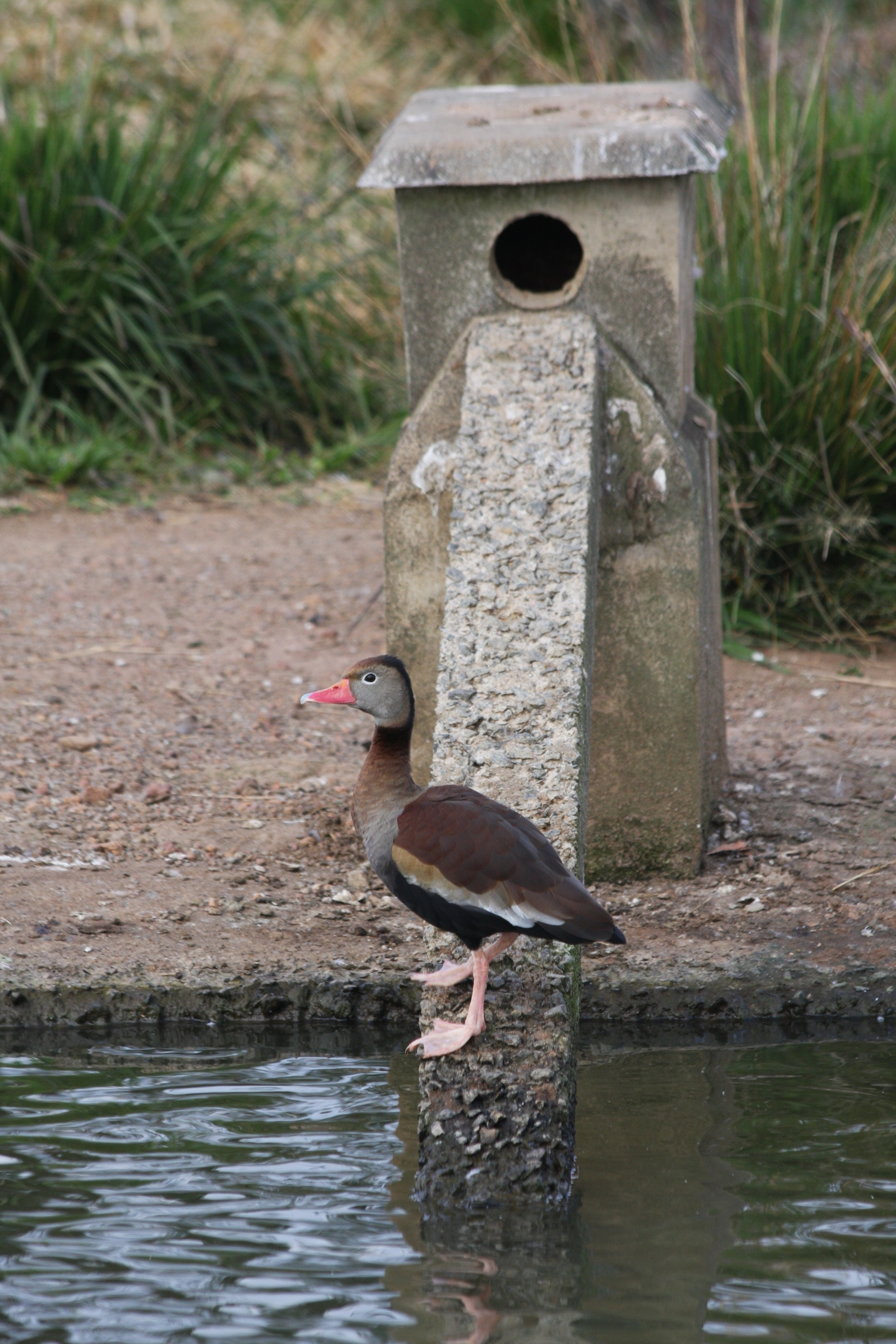
Above: Southern black-bellied whistling duck (Dendrocygna autumnalis autumnalis) in front of a concrete nestbox (in a Brazilian waterfowl collection).
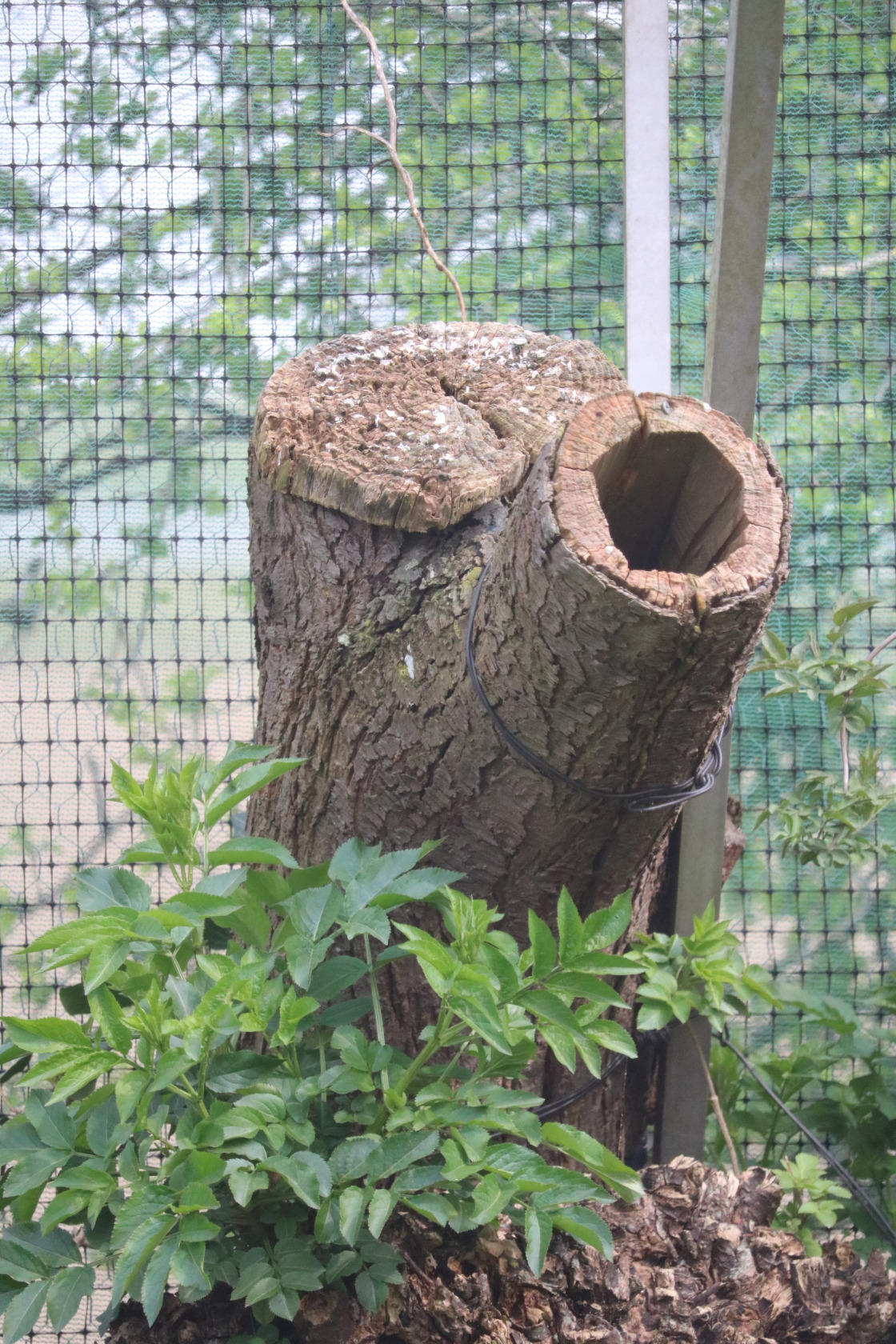
Above: A hollow tree used for small cavitiy nesters such as pygmy geese (Nettapus sp.), smew (Mergellus albellus) or teal.

Above: A wood duck (Aix sponsa) nestbox in American swamps and nature refuges, mostly constructed and placed by Ducks Unlimited community (hunters). A safety collar prevents predators (rats, snakes, raccoons) from entering the nest box.
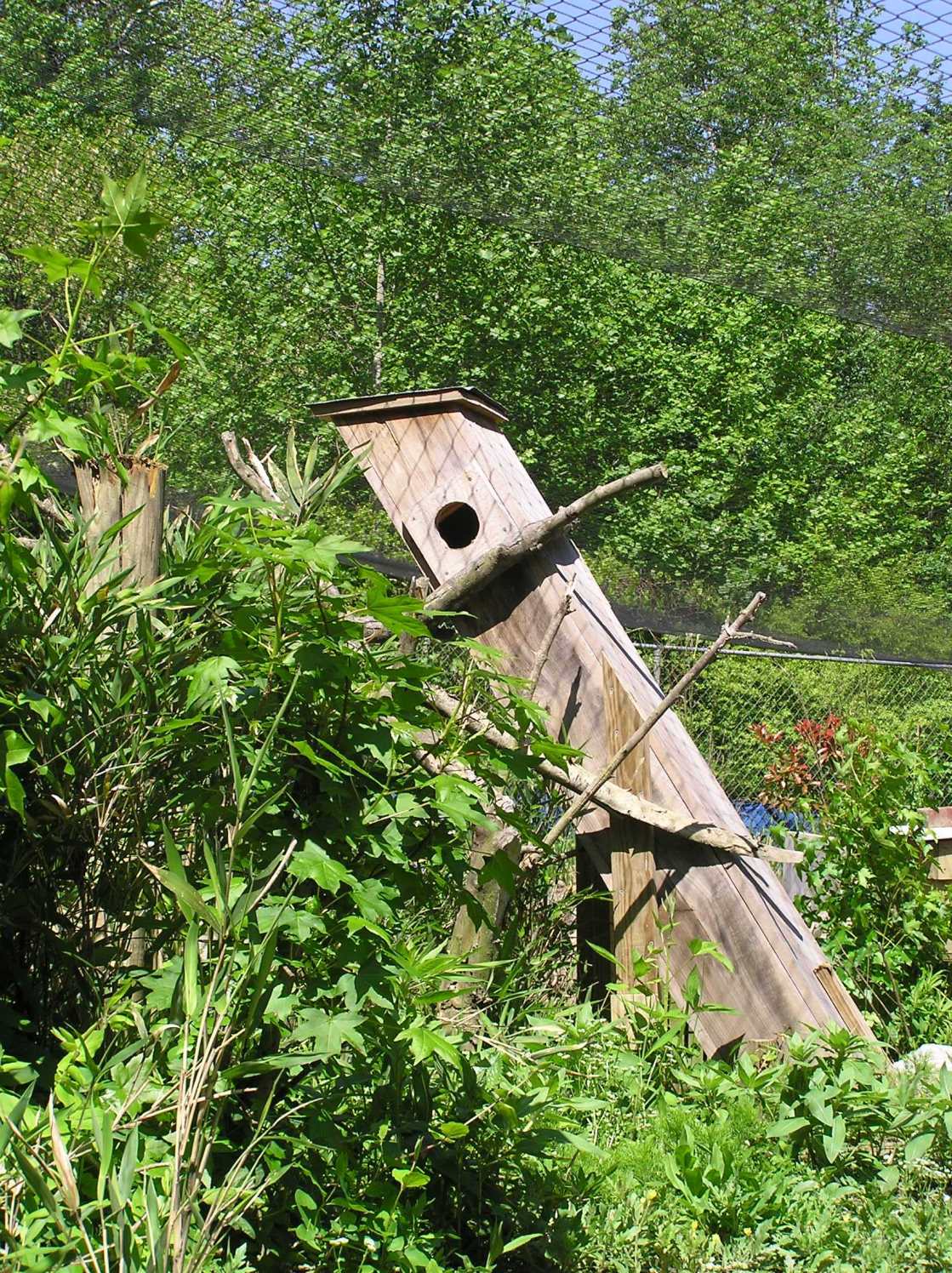
Above: A nestbox experiment at Sylvan Heights Bird Park (2005) developed for pygmy geese (Nettapus sp.).
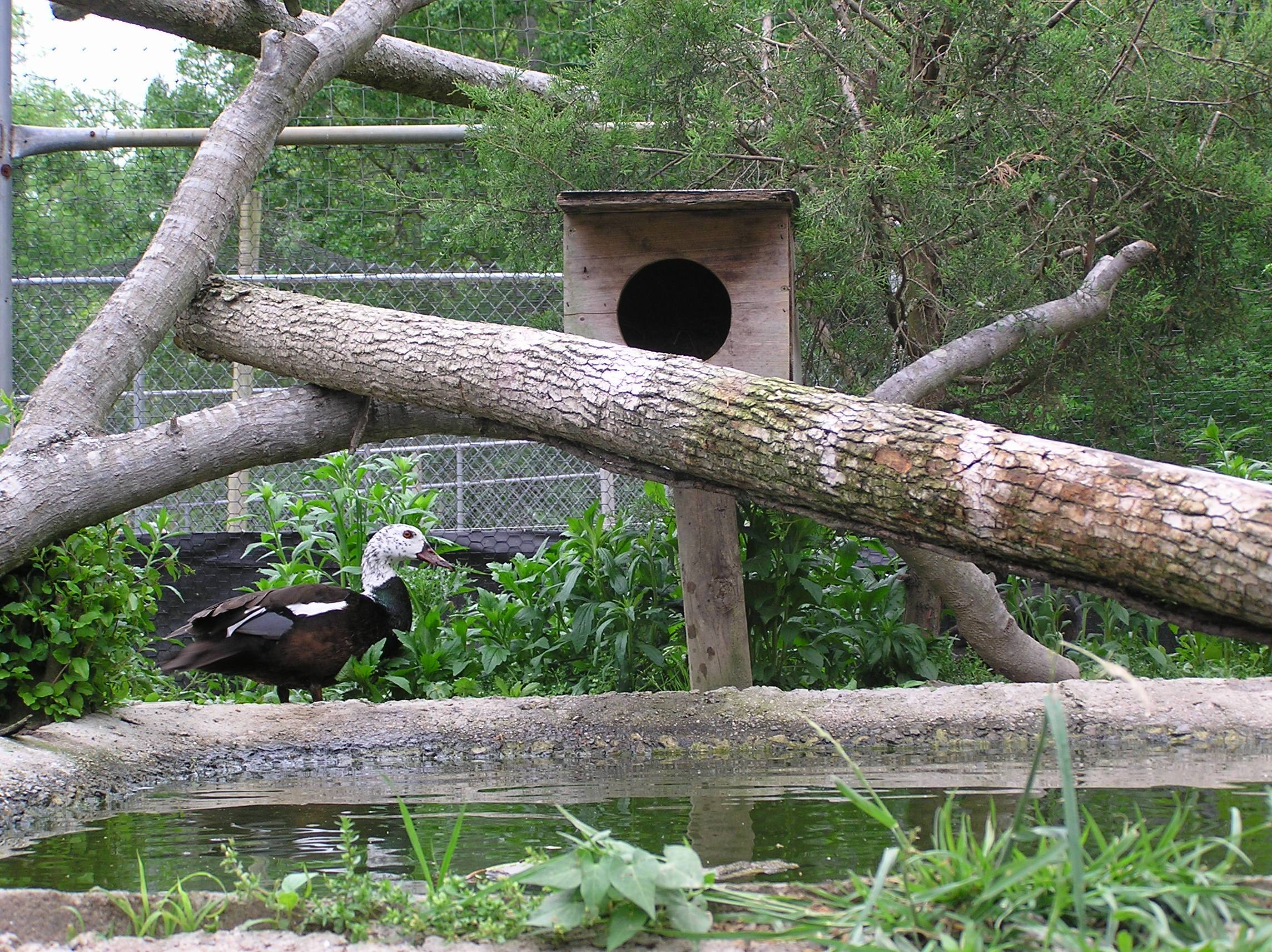
Above: A nestbox used for white-winged ducks (Asarcornis scutulata).

Above: Nestboxes for several types of cavity nesters such as Goldeneyes (Bucephala sp.) or mergansers (Mergus sp.).
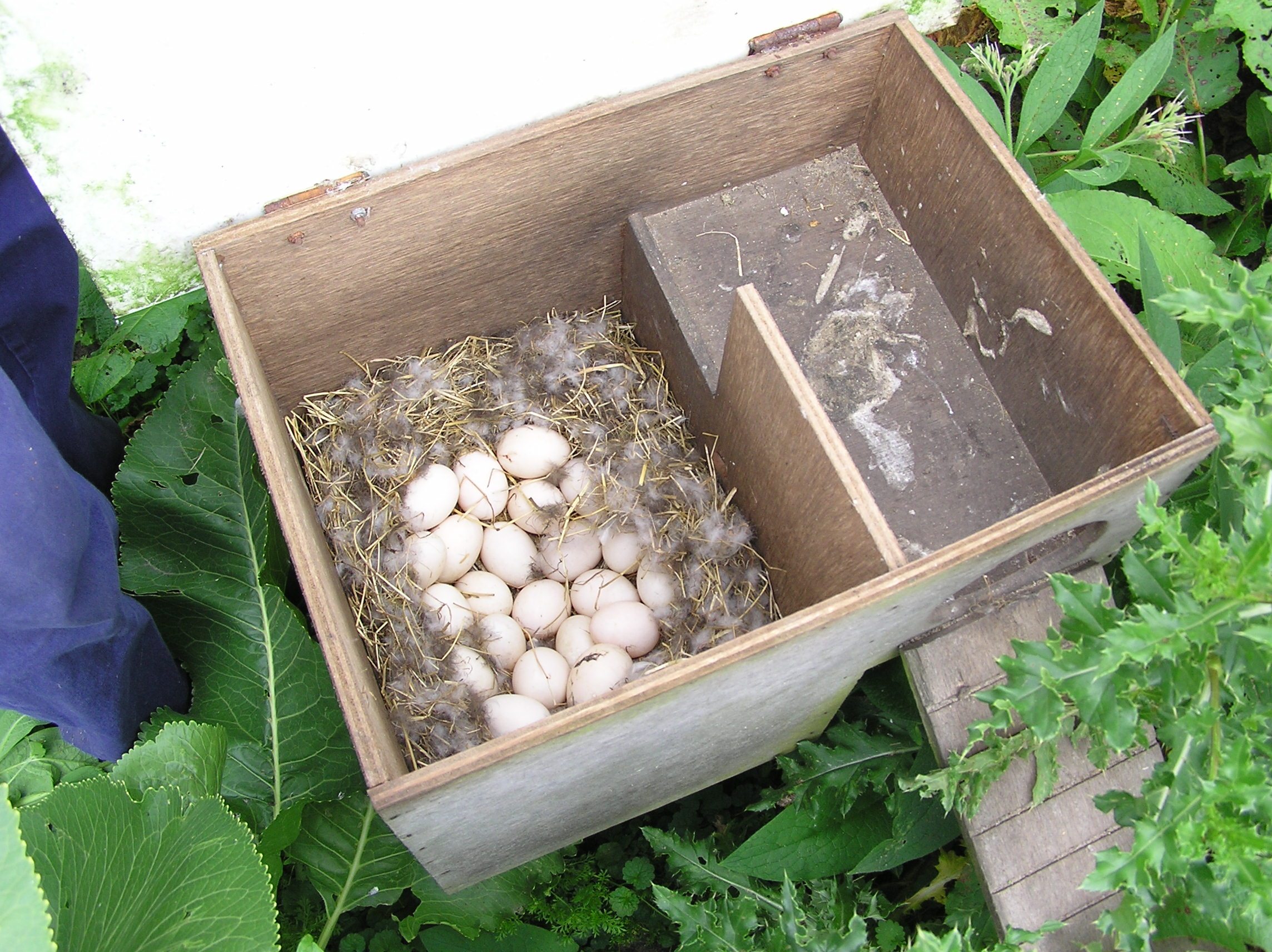
Above: The interior of a nest box. The porch prevents a duck from falling on the eggs with a lot of force and the eggs from breaking.

Above: The interior of a nest box. The porch prevents a duck from falling on the eggs with a lot of force and the eggs from breaking.
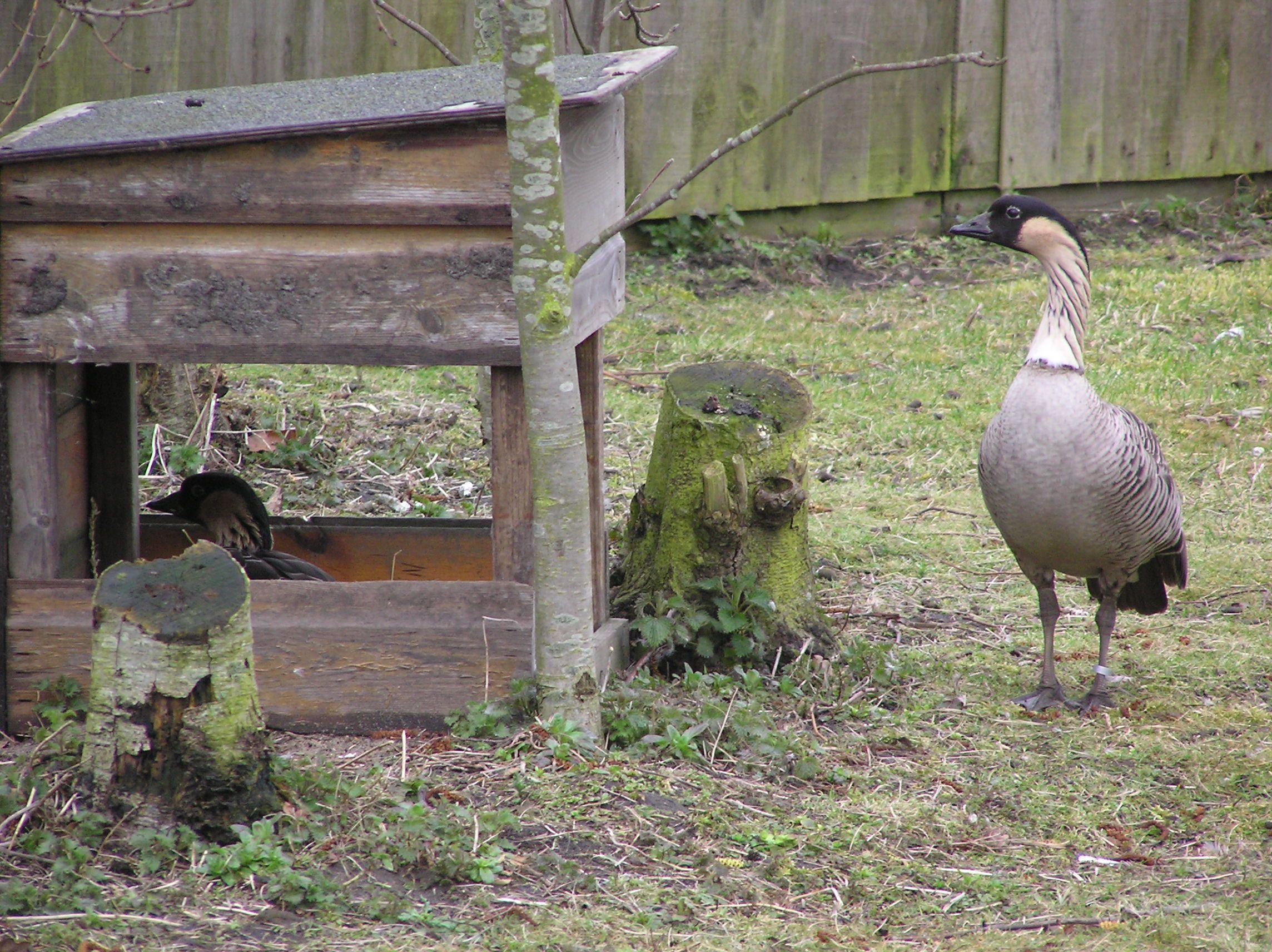
Above: Many geese species prefer a nest with overview to their territory. This nestbox is used for many typical geese (Branta sp. or Anser sp.), like these Hawaiian geese or Ne-ne (Branta sandvicensis).

Above: Eiders (Somateria sp.) make their nests in open spaces like the Arctic tundra. In avicuture eiders prefer open spaces too, like some pieces of wood or rocks in the middle of a field.








